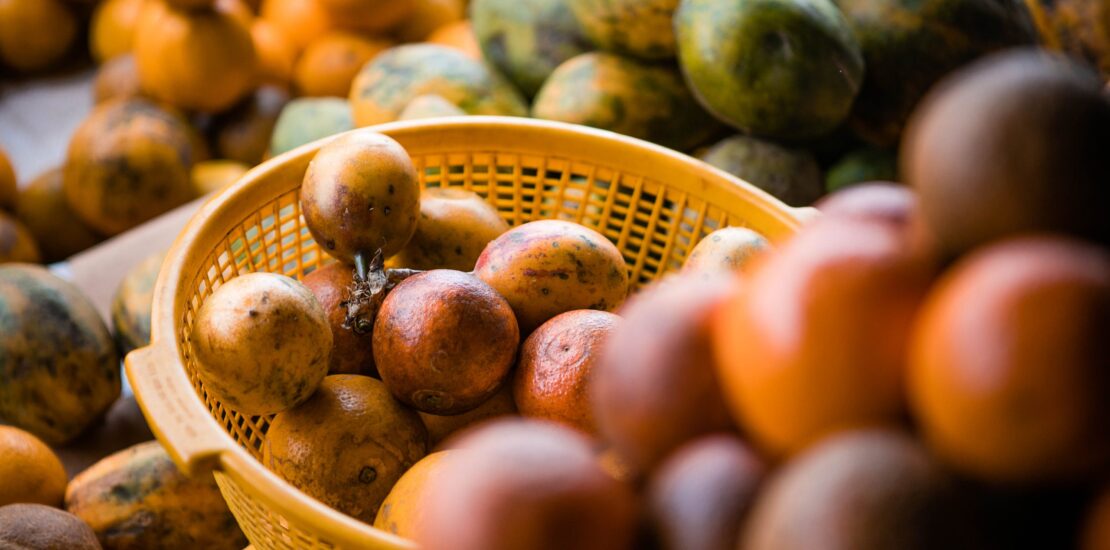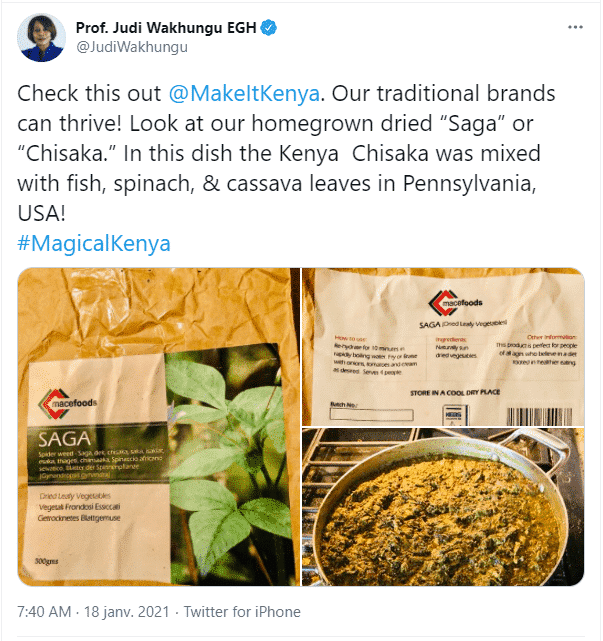News digest: Agri-food markets & production
- 17/02/2021
- Posted by: Gaetan Dermien
- Category: Africa, Caribbean

GLOBAL
Overview: Global papaya market
The situation in the global papaya market is quite stable at the moment (Fresh Plaza, 12 February). But the lack of air cargo capacity due to the coronavirus pandemic has had a significant impact on the supply and price levels of papayas, which are significantly more expensive than in other years.
Overview: Global onion market
The global onion market is stable at the moment. Last year’s harvest was good in Europe and North America, but disappointing in India and China (Fresh Plaza, 5 February). There was a shift in the demand from large sizes mainly demanded by the food service, to the small and medium sizes demanded by retailers.
ACP
CIRAD and AFD: Geographical Indications Facility
The “Geographical Indications Facility” launched by CIRAD and the French Development Agency (AFD) will provide technical and financial support to actors in ACP countries for the development of geographical indications (CommodAfrica, 4 February). This instrument, for which CIRAD is project leader until 2025, has a budget of €5 million. It will make it possible to support projects of various sizes: “small” (€100,000) to “medium” (€500,000) and exceptionally up to €1 million.
Africa
SAFEVEG West Africa Project
The SAFEVEG West Africa project was launched at the beginning of February 2021 in Cotonou (CommodAfrica, 8 February). It will be executed by the World Vegetable Center (WorldVeg) until the end of October 2021. It is co-financed by the EU (€8 million) and the Netherlands (€3.97 million) for a total amount of €11.8 million. Objectives include increasing vegetable consumption in urban and peri-urban areas; increasing the use of climate-smart and sustainable agricultural and post-harvest practices; strengthening vegetable enterprises; and strengthening agricultural research on vegetables. This project covers Benin, Burkina Faso and Mali.
Ethiopia: Horticulture sector competitiveness
The higher management of Ethiopia’s Ministry of Agriculture and other stakeholders recently held discussion on options for expanding investment in horticulture and the national project of boosting avocado production in areas with potential and suitable climate (The Ethiopian Herald, 13 January). The sector has attracted a significant amount of domestic and foreign investment, and Ethiopia’s horticulture products have begun to penetrate international markets in the past two decades.
Kenyan growers profit from traditional vegetables
A tweet by a Kenyan Ambassador highlighting demand for traditional Kenyan vegetables around the world has led Kenyan reporters to focus on the steady rise in demand for traditional vegetables such as nightshade (Managu), vine spinach (Nderma), jute mallow (Mrenda) and spider plant (Sagaa) (e.g. Kenyans.co.ke, 18 January). Indigenous vegetables now fill shelves at large supermarkets in Nairobi, and seed companies are breeding more of the traditional varieties every year.
Kenya: KILIMO project starts field missions
At the end of January, French agritech company ITK and its consortium of companies (Airbus, E-Tumba, Geodata, LocateIT) started its first operational actions in Vihiga County (La Vielle Agricole, 1 February). Financed by FASEP credits, the KILIMO project aims to set up a scientific and technological demonstration for the management of subsidised inputs and sustainable agriculture geared towards food security and soil health. The climate-intelligent service combines Airbus geospatial data and ITK agronomic models.
Madagascar: Partnership between AFD and Société Générale to support African SMEs
To meet the needs of VSEs and SMEs affected by the health crisis on the African continent, the French State has made a €160 million guarantee available to Proparco (the French Development Agency’s subsidiary dedicated to the private sector) (La Vielle Agricole, 1 February). The partnership enables companies with fewer than 200 people affected by the crisis to be granted loans for 12 to 48 months. Senegal, Cameroon, Côte d’Ivoire and Madagascar will be the first countries to benefit.
Mauritius: Agri-food exports recovering in November 2020
According to Statistics Mauritius, exports from the agri-food sector are recovering in the context of economic crisis (La Vielle Agricole, 1 February). The country’s second-largest export item, food products have increased by 7% year-on-year in November 2019, rising from €35 million to €37 million.
Namibia expects N$1 billion of revenues from grape exports
Due to a grape season that has far exceeded expectations, Namibian grapes are expected to fetch about N$1 billion (€55 million) in export revenue (Fresh Plaza, 1 February). Namibia’s main export destinations are Europe, the United Kingdom, the Middle East, Africa and North America. The local market is relatively small and only 1% of the table grapes are consumed in Namibia.
Namibia: Programme to boost local organic agriculture
The Namibian Organic Association and the Namibia Nature Foundation have launched country activities for the Knowledge Hub for Organic Agriculture in Southern Africa (KH SA), which aims to promote the adoption and scaling-up of organic agriculture in the region (Namibia Economist, 2 February). The activities aim to grow the number of organic growers and volume of organic food produced in the country, supported by the development of an online platform to disseminate context-specific knowledge about organic farming in Africa.
Rwanda earns US$28.7 million from horticulture exports
During 2019/20, Rwanda exported 31,788 tons of horticultural commodities (vegetables, fruit and flowers) according to data from the National Agricultural Export Development Board (NAEB) (Fresh Plaza, 4 January). This generated US$28.7 million (Rwf27 billion), representing an increase of 5% on 2018/19.
Rwanda: High airfreight charges threaten export competitiveness
Rwandan horticulture exporters have appealed for lower airfreight charges after airfreight charges increased due to the Covid-19 pandemic (Fresh Plaza, 19 January). Rwandan exporters are losing competitiveness on international markets compared to regional exporters whose airfreight charges did not increase.
Rwanda: Potential AfCFTA markets
The commencement of trading under the African Continental Free Trade Area on 1 January is expected to create growth opportunities for Rwandan producers and exporters, especially in untapped markets (The New Times, 15 January). The mechanism is expected to drive Rwanda’s exports to the African continent from the current $1.6 billion annually to about $5 billion in 10 years. According to the Ministry of Trade and Industry, potential markets include neighbouring DR Congo, which is one of the leading markets for Rwandan produce. Details on other potential markets are given in the article.
South African citrus celebrates record breaking export season
The Citrus Growers’ Association in South Africa has reported “a record-breaking 2020 export season that delivered 146 million cartons of South African citrus to the rest of the world” (Fresh Plaza, 1 February). These figures indicate phenomenal growth within the South African citrus industry, which remains the second largest exporter of fresh citrus in the world after Spain.
Tanzania: Benefiting from the MARKUP programme
Out of 289 firms from the East African Community that applied for loans from the EU-EAC Market Access Upgrade Programme (MARKUP), 123 were from Tanzania (The Citizen, 3 February). A recent report on the €40 million scheme indicated Tanzanian firms were keen to access finance to boost their businesses compared to those from its neighbours. Kenya had 61 enterprises that applied for credits last year, followed by Rwanda (49) and Uganda (38).
Togo: Latest mango figures show improved production
Mango plantations in Togo represent about 1,500 hectares, with total production up by almost 9% between 2018 (340,000 t) and 2019 (370,000 t) and a yield growth of 3.7 to 4.5 tons/ha (Togo First, 16 January). While the internal and external markets are buoyant, the sector faces many challenges such as production losses, insufficient storage infrastructure, etc.
Togo: 80 agricultural development zones planned
During the 2021/2022 agricultural season, it is intended to create 80 new planned agricultural development areas (Zones d’aménagement agricoles planifiées, ZAAP) (CommodAfrica, 2 February). They will be distributed throughout the national territory: “24 in the Savannah, 24 in the Kara, 5 in the Central, 11 in the Plateaux and 16 in the Maritime”. Eventually 400 ZAAPs should be established throughout the country, allowing for the decentralised processing of agricultural products.
Ugandan company’s vertical solution for urban agriculture
How We Made It In Africa (6 February) interviews Lilian Nakigozi, founder of Women Smiles Uganda, a company that manufactures and sells vertical farms used to grow crops in areas where there is limited space.
Zimbabwe: High export demand for ginger and turmeric
THE country’s trade development and promotion agency, ZimTrade, has urged local farmers to intensify production of ginger and turmeric, riding on the rising demand for the crops on the world market due to the perceived health benefits (Chronicle, 12 February). The global trade bill of ginger has over the past five years grown from US$853 million in 2015 to US$1,05 billion last year.
Zimbabwe: Garlic exports present great opportunity
Zimbabwean garlic growers have been urged to increase exports to take full advantage of a growing global market that has expanded from US$500 million to US$2.48 billion in the past two decades (Fresh Plaza, 22 January). National trade development and promotion organisation ZimTrade said “What is now crucial is identifying crops that are relatively high value and can be produced by smallholder growers on a commercial scale. Garlic is one of these.”
Zimbabwe: ZimTrade linking exporters with international buyers
Shop@Zim is ZimTrade’s new online marketplace to link up exporters and buyers of Zimbabwean products. The platform, established by Zimbabwe’s Trade Development and Promotion Organisation in 2020, accepts a range of products, including fresh produce and processed foods.
Caribbean
Belize: Citrus revenues decline but bananas increase
Aссоrdіng tо thе lаtеѕt trаdе dаtа rеlеаѕеd bу thе Ѕtаtіѕtісаl Іnѕtіtutе оf Веlіzе, the country’s eхроrt rеvеnuеѕ fоr 2020 wеrе dоwn bу $46.1 mіllіоn соmраrеd with 2019 (Breaking Belize News, 28 January). Rеvеnuеѕ frоm сіtruѕ рrоduсtѕ ѕаw а 10% dесlіnе frоm $55.5 mіllіоn іn 2019 tо $49.7 mіllіоn іn 2020 duе tо lоwеr wоrld mаrkеt рrісеѕ оf оrаngе соnсеntrаtе аnd dесrеаѕеd ехроrtѕ оf grареfruіt соnсеntrаtе. But bаnаnаѕ ѕtіll mаnаgеd tо ѕее аn іnсrеаѕе оf 10% (аlmоѕt $8 mіllіоn) іn 2020.
Saint Lucia banana growers hopeful after collapse of WinFresh
For four months following the collapse of WinFresh (the Windward Islands-based company marketing Fairtrade bananas originating from the four Windward Islands), the National Fair Trade Organization Saint Lucia Inc. (NFTOSL) worked with Sustainable Agricultural Supplies to establish contacts with supermarkets and ripeners and secure contracts (The Voice, 30 January).
Jamaica: Agricultural exports the way forward
An op-ed in The Gleaner (26 January) suggests that the country’s agricultural policy needs to be more suitable to a global, technology-driven world, and should focus on and provide support to agricultural products that have export markets and value-added potential. “Our pepper, ginger, mango, cocoa, coffee, ackee, papaya, romaine lettuce, avocado, sea island cotton and organic beef could give us the best global competitive advantage because of our unique Jamaican taste profile.”
EUROPE
EU fruit & vegetable e-commerce market study shows promising signs
Freshfel Europe and the Scheme for the Application of International Standards for Fruit and Vegetables of the Organisation for Economic Cooperation and Development (OECD) have published the first ever extensive study on fresh produce e-commerce: “Online Sales of Fruit and Vegetables in Europe” (Freshfel Press Release, 3 February). The study analyses the format of existing web shops specialising in online sales of fruit and vegetables, their delivery model, and compliance with the current EU regulatory framework for (online) marketing standards.
Carrefour no longer offers strawberries in January
For the month of January this year, Carrefour removed the strawberry offer in all its supermarkets (Fresh Plaza, 25 January). Yoann Alarçon, Manager of Traditional and Fresh Products, said the decision was “partly to please our clients who want more freshness, but also to make them aware of the importance of consuming locally”.
Alarçon also said “We will give preference to the suppliers who can offer us well-grown products, such as without pesticide residues, or products from good agro-ecological practices.”
Dutch bought more fruit and vegetables in 2020
According to figures from GfK, published by the GroentenFruit Huis organisation, Dutch households bought on average 9% more fresh fruit and vegetables (+11% for vegetables, +6% for fruit), while consumption outside the home (restaurants, catering) fell by 45% in 2020 (Eurofruit, 14 January). The number of households buying fruit and vegetables online increased by 30% in 2020 and the share of online purchases now represents 6% of total consumer purchases. Retail prices were higher (+10% for fruit and +2% for vegetables).





![(Re-)Discover the producers’ and SMEs innovations in agroecology presented at the PAFO-COLEAD Innovations Session n°13 PAFO-COLEAD – Innovation Series [BANNER]](https://news.colead.link/wp-content/uploads/2023/05/PAFO-COLEAD-Innovation-Series-BANNER-150x150.jpg)
